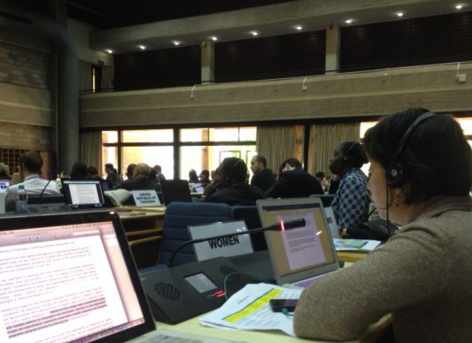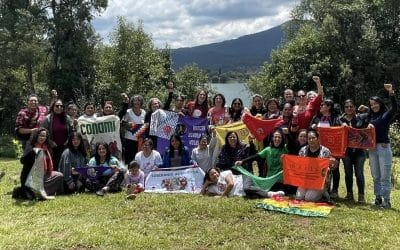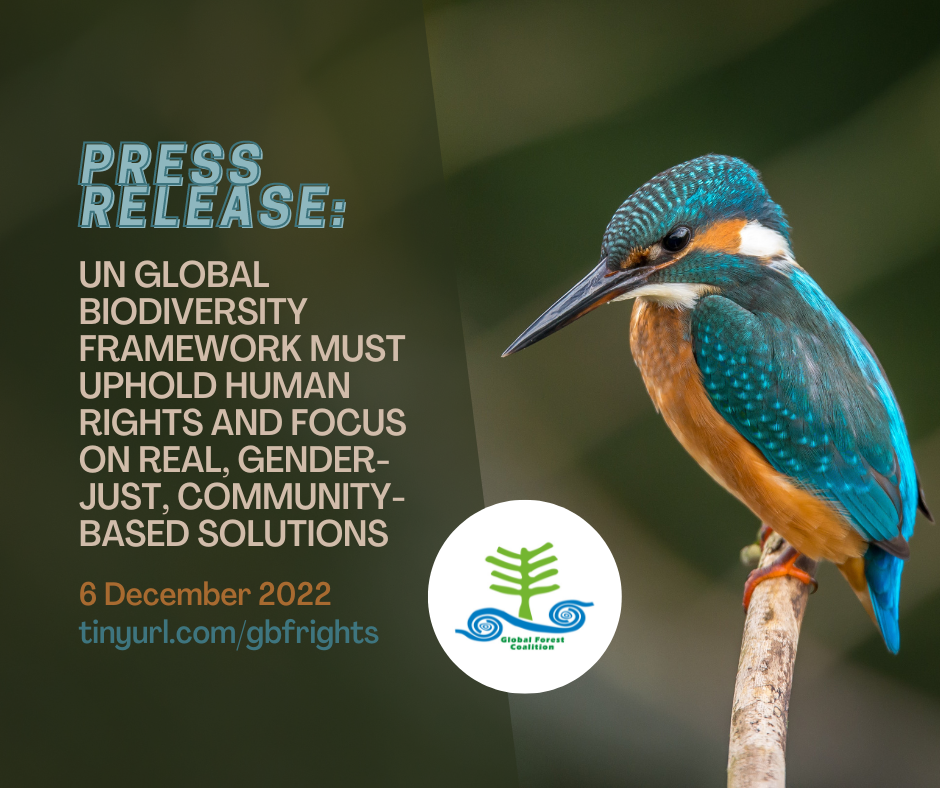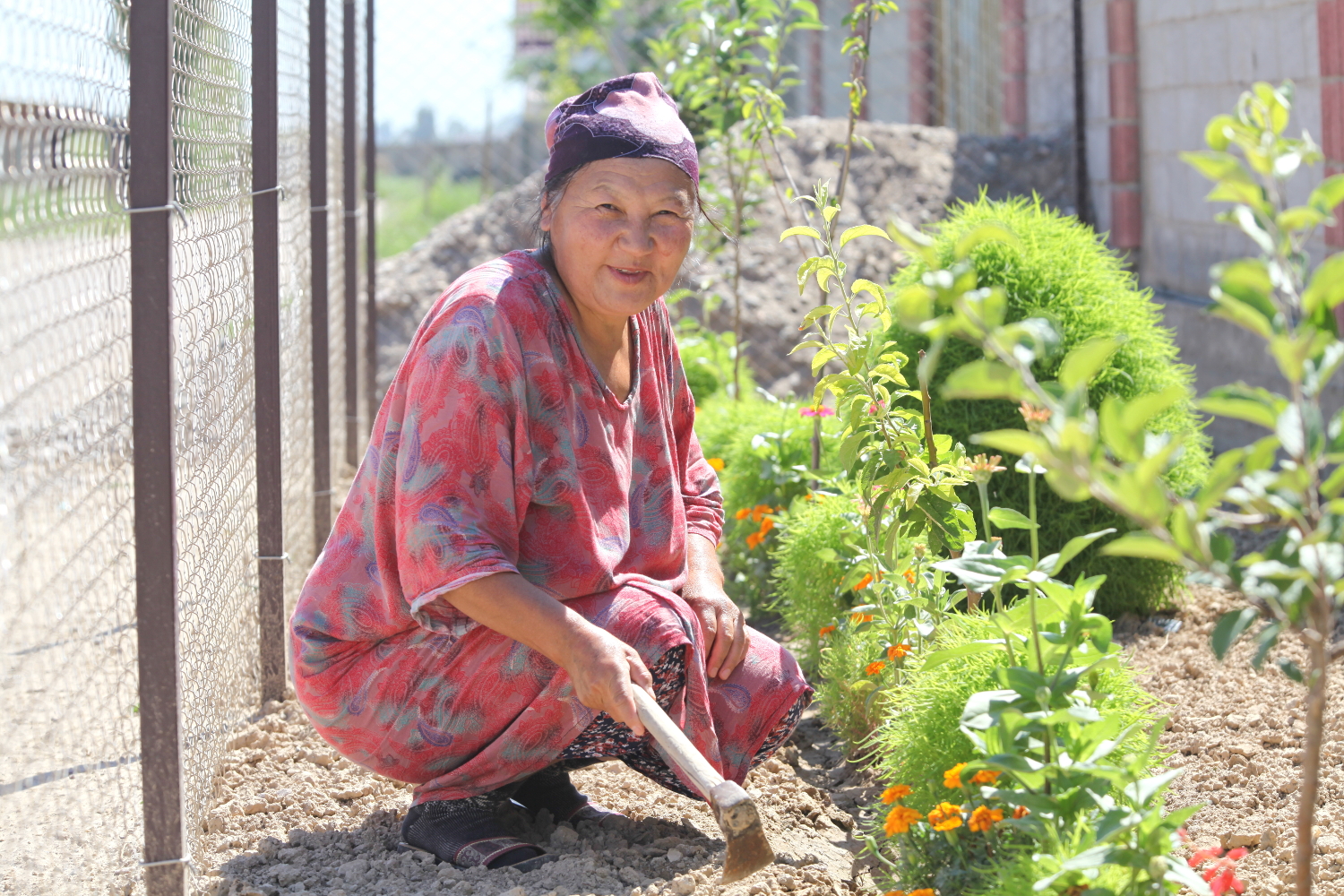by Isis Alvarez*
From February 15-19, the 2nd Meeting of the Open Ended Committee of Representatives met in Nairobi, Kenya, at the UNEP Headquarters. This meeting serves as the preparatory meeting to the 2nd United Nations Environment Assembly, that will also be held in Nairobi from May 23-28th.
UNEA-2 is going to be the first multi-lateral forum after the past climate negotiations in Paris, and will be dealing explicitly with the environmental dimension of the Agenda 2030 and is entitled ‘Delivering on the Environmental Dimension of the 2030 Agenda for Sustainable Development and the Global Thematic Report on Healthy Environment, Healthy People’.
Prior to the OECPR that started on Monday, the Global Major Groups and Stakeholders Meeting took place during Valentine’s Day. The agenda was divided into different sections that included interactive dialogues with Ibrahim Thiaw (UNEP Deputy Executive Director); Julia Pataki (Chair of the CPR); Jorge Laguna (Secretary of the Governing Bodies); and the Government Representative of the United States, to name a few. Working groups were established on themes such as COP21-Paris agreement, 2030 Development Agenda, Process of GEO-6, Mobilising finance for investment in SD, and the Global Thematic Report, among others. At the same time presentations on the issues were given; Isis Alvarez (GFC) from the Women’s Major Group presented the WMG position on the Paris outcome (see Annex 1).
Different Resolutions were discussed at the OECPR, all of them grouped into 5 different Clusters (see below for specific themes). It is worth highlighting that some Member States thought there were too many Resolutions already and it made work difficult. As a result, some Resolutions were merged.
In Cluster One, Resolution 4. Roles of UNEP and UNEA in delivering on the environmental dimension of the 2030 Agenda for sustainable development – and 5. Promoting the effective implementation of the Paris Climate Agreement were the most ‘controversial’. In the former, negotiations got stalled as it was believed that any decisions here could jeopardize an agreement that has not yet been signed. In the 2030 Agenda deliberations, despite a lot of text remaining in brackets, many agreed that UNEA-2 should play a more prominent role in the HLPF.
For Cluster Two perhaps the most contentious issue consisted on SCP; there is still a lot of bracketed text and there are still issues that need to be clarified regarding this decision’s relation to the whole 10YFP and the SDGs that address SCP.
A couple of Resolutions on Cluster Three on ‘Oceans and Seas’ and ‘Marine debris’ were proposed to be merged but bi-laterals continue on this and other issues were agreement still can’t be reached.
Resolution 1 on Cluster 4 on ‘Sustainable and optimal management of Natural Capital for sustainable development and poverty eradication’ also awaken lively discussions. On the first session discussions were interrupted until the Secretariat could provide a definition of ‘Natural Capital’ given that the whole Resolution referred to this term. Later on, negotiations began but still there is no consensus on the Resolution. Countries like Argentina and Russia supported ‘Natural Resources’ instead of ‘Natural Capital’ and at some point, even reserved the whole Resolution. The NGOs, WMG and Indigenous People’s Major Group made a joint statement (see Annex 2) of all the other intrinsic values of natural resources that are left out if the sole ‘natural capital’ were to be used. The African Group is a strong advocate for NC, Resolution proposed by Botswana based on the Cairo Declaration, product of a recent meeting of African Environment Ministers on ‘Managing Africa’s Natural Capital for Sustainable Development and Poverty Eradication’. Other relevant issues in Cluster 4 included 3. Protection of the environment in areas affected by armed conflict and 4. The Impact of the Syria Crises on the Natural Environment in Neighbouring Hosting Countries. A new draft resolution awaits for UNEA-2 with view for a Fact-Finding Mission to Palestine requested by Arab States and Morocco.
The final cluster, Cluster Five included 1. Integration of Biodiversity for Well-being proposed by Mexico calls for an alignment related to the upcoming COP13 of the CBD and links up well with the Aichi Targets and the Nagoya Protocol. However, issues with the title remained and even the contested term ‘natural capital’ has been proposed for such. Deliberations are still ongoing.
The second resolution on 2. Enhancing the work of UNEP in facilitating cooperation, collaboration and synergies among biodiversity-related multilateral environmental agreements also did not reach an agreement and a lot of text remains bracketed. Resolution 3. Medium-Term Strategy 2018-2021 and biennial programme of work and budget for 2018-2019, called for increased voluntary funding to UNEP but member states differed widely in their positions.
The Stakeholder Engagement Policy was not part of the agenda but consultations were carried out by the President of UNEA, Oyun Sanjaasuren (Mongolia). So far, it seems China and Pakistan are blocking the decision for an updated SEP but consultations are still ongoing. Other resolutions were not discussed but will still be considered for UNEA-2: Iran’s proposal on Dust and Sand Storm, the UNEA cycle, and the Montevideo Program IV on Environmental Law.
Last but not least, a specific session for debating the Global Thematic Report ‘Healthy People Healthy Planet’ took place. Major Groups were able to contribute (see Annex 3) and quite a few of these recommendations were taken on board by the Executive Director Achim Steiner as well as by other governments.
FOR A DETAILED REVIEW OF THE NEGOTIATIONS SEE http://www.iisd.ca/download/pdf/enb16128e.pdf
List of Clusters & Resolutions:
Cluster One
1. Role, functions and follow up to the Forum of Ministers and Environment Authorities of Asia Pacific
2. Investing in human capacity for Sustainable Development, through environmental education and training
3. The role, functions and modalities for UNEP’s implementation of the Samoa Pathway as a means to facilitate achieve of the Sustainable Development Goals (SDGs)
4. Roles of UNEP and UNEA in delivering on the environmental dimension of the 2030 Agenda for sustainable development
5. Promoting the effective implementation of the Paris Climate Agreement
Cluster Two
1. Environmentally Sound Technologies in relation to waste management
2. Sustainable Consumption and Production
3. Sound Management of Chemicals and Waste
4. Wasted food reduction, rescue and diversion
Cluster Three
1. Oceans and seas
2. Marine plastic debris and microplastics
3. The International Environment Forum for Basin Organizations
4. Sustainable coral reefs management
Cluster Four
1. Sustainable and optimal management of Natural Capital for sustainable development and poverty eradication
2. Illegal trade in wildlife and wildlife products
3. Protection of the environment in areas affected by armed conflict (agreed as ref)
4. The Impact of the Syria Crises on the Natural Environment in Neighbouring Hosting Countries
Cluster Five
1. Integration of Biodiversity for Well-being
2. Enhancing the work of UNEP in facilitating cooperation, collaboration and synergies among biodiversity-related multilateral environmental agreements
3. Medium-Term Strategy 2018-2021 and biennial programme of work and budget for 2018-2019
ANNEX 1
UNEP-Women’s Major Group on COP21
Based on the Document: ‘Proposed resolution for UNEA on Paris Agreement’ & ‘A Reality Check on the Paris Agreement from the Women and Gender Constituency (WGC)’
While the others might want us to move forward with the process, the Women and Gender Constituency provided a reality check.
So, what does it really mean to promote an effective implementation of a weak agreement? We are talking about a binding legal document that doesn’t recognize historical responsibilities and continues to undermine the principle of common but differentiated responsibilities; hence, it lets countries decide how much longer and how they still want to continue to pollute, leaving all commitments to weak voluntary Intended National Determined Contributions (INDCs).
It is true that Parties to the UNFCCC committed to maintain a global average temperature below 1.5ºC but they failed to recognize and understand that in some areas such as Islands States, this ‘limit’ has been exceeded already by far and that it is already too late. The latest IPCC report says that doubling of greenhouse gas levels in the atmosphere compared to what they were in 1750 will likely result in warming between 1.5°C to 4.5°C. Scientists haven’t managed to narrow this down since the IPCC was first set up. So, if the low figure is true, really radical action could limit warming to less than 1.5°C but if it’s the medium or higher figure then there’s no chance at all. For the Women and Gender Constituency, seeing this goal on paper is not enough. We demand it in actions as the proof of full commitment to that goal, not vague aspirations.
Thus, ‘making finance flows consistent with a pathway towards low greenhouse gas emissions and climate resilient development’ will result highly difficult especially in light of the corporate take over of the climate negotiations; the quality of and a goal for scaling up adequate and predictable, largely public finance which is highly needed, lost a lot of political strength while business interests that have lobbied hard in our home countries will be the first to benefit from the agreement as it fundamentally does not address the needs of the most vulnerable countries, communities and people of the world. It fails to address the structures of injustice and inequality which have caused the climate crisis and hold the historical polluters sufficiently to account. What happened in Paris was that governments maintained their commitment to corporations over people and signaled opportunities for profit to be made from crisis. The Green Climate Fund – for instance – is increasingly being captured by multilateral development banks and international private entities with poor track records. The lack of transparency and preponderance of big banks and international entities over national and sub-national entities blatantly defies the GCF mandate of being more responsive to the needs of vulnerable developing countries and communities.
What is left unclear in the Paris Agreement is how soon will the international community and specifically the world’s rich countries succeed in raising the estimated 100 billion dollars per year needed by 2020? Paragraph 54 on the agreement means no money on the table prior to 2020, just intention of mobilisation. In Cancun, Parties had agreed to developed countries mobilising USD 100 billion per year by 2020. With the Paris Agreement, a five-year extension has been granted in order to reach this target and a new quantified goal will be set for the period after 2025.
The Women and Gender Constituency has long argued that climate finance should come from taxing the highest 1% of emitters. A tax on high emitters of between 5-10% would provide at least USD 150 billion per year. Funds can also be derived from harmful industries. 80% of GHG emissions are caused by the burning of fossil fuels and the subsidies to this sector accounts for USD 5.3 trillion a year. Redirecting these subsidies prioritizing women and the poor could anchor a transformative shift.
Besides, a common understanding on what entails truly ‘sustainable energy’ is urgently needed. Currently, ‘clean’ energy sources allow dirty energies like large-scale wood-based bioenergy to be recognized as a ‘renewable’ energy source, and even harmful hydropower also enters the category. But what does an innovative’ large hydropower dam means for an entire ecosystem? What does the establishment of a single 500,000voltt tower in a rural area means to people, plants, animals, soil organisms and water sources? We are sure that there are real solutions out there such as solar and wind-power, and that genuine transformation to a low carbon society requires further analysis of what is that will actually take us on that path and what would drive us apart.
Critical issues like clear emission reductions without offsetting and misleading market approaches; ensuring the quality of technologies which should be safe and socially and environmentally sound; the responsibilities of developed countries to take the lead, the responsibility to protect people’s rights and our ecosystems including indigenous peoples and women’s rights, have been either surgically removed throughout the text or lack specificity; that we are not protecting food security but instead are protecting food production, all of them, are issues that jeopardize the whole 2030 Agenda on Sustainable Development Agenda and its SDGs, such as Goal 12 on Sustainable Consumption and Production, to name but one example. Unsustainable food systems are not given enough attention and most rhetoric, fails to recognize the importance of this issue, not just on the context of climate change but also in the context of poverty eradication. A clear example is the increased deforestation in Paraguay – also undermining Goal 15 – and associated social problematic (Goal 1) due to GM soy and cattle ranch expansion. Exclusionary methods such as increased carbon trading which are now expanded to the agricultural sector, and land use change (LULUCF); the flawed ‘Net zero emissions’ principle and unproved technologies such as BECCs, gained further support while the human rights language was weakened.
The ‘loss and damage’ mechanism mentioned in Article 8, that would have meant compensation to those most affected from climate change, lost all significance on paragraph 52 when is states “that Article 8 of the Agreement does not involve or provide a basis for any liability or compensation”. At the same time, climate refugees continue to be ignored and the agreement failed to be transformative and legally recognize them.
Perverse initiatives endorsed by the Paris agreement such as Climate Smart Agriculture surrender too much power to already powerful multinational corporations monopolizing the food industry setting the stage for the further demise of small peasant farmers especially women and their related traditional knowledge. Already a report from FAO (2014) demonstrated how agroecology could feed the world without the need for harmful and misleading technologies while empowering small scale farmers.
We know that climate change is the greatest threat to rights in our time, and we know that women often bear the brunt of these impacts. We believe that operational language on gender equality, alongside other fundamental rights, in Article 2, defining the purpose of the agreement, would have gone far to ensure that all forthcoming climate actions take into account the rights, needs and perspectives of women and men and encourage women’s full and equal participation in decision-making. This was the moment to set the right path, the just path for climate action. But it just didnt happen. SDG 13 needs to go beyond the Paris agreement.
To call this an ‘ambitious agreement’ is totally misleading. Civil society organizations and social movements openly protested the outcome of the negotiations.
Women of the world have been calling for climate justice, and we know that calls for climate justice are empty without acknowledging that ‘justice’ requires a remedy, justice is delivered when reparations are provided, and justice is essentially for accountability.
ANNEX 2
MGs Joint Intervention for Cluster 4 – Resolution 1
The Women, NGO and Indigenous Peoples Major Groups would like to express our concern with the draft resolution on Sustainable and optimal management of ‘Natural capital for Sustainable development and poverty eradication’, as the term ‘ natural capital’ fails to recognise other intrinsical such as spiritual values of natural resources and reduces them to mere financialization which could result highly detrimental for the world’s natural resources and other international agreements such as the Convention on Biological Diversity and SDG15.
Some of the challenges associated with the utilization of natural capital include displacement of local communities, impacts on human health as a result of pollution, degradation of key ecosystems and biodiversity and unemployment due to imports of machinery and labour. Solutions to these problems should be urgently found and implemented.
There is need to ensure extractive industries should be provided with guidelines and best practices upon which to operate. There should be careful consideration for ecosystems and biodiversity in planning and implementation of projects that utilize natural resources, especially extractive industries. Strategic Environmental Assessment should guide the roll out of national extractive industry programmes and UNEP can play a big role in this.
At the same time, national level policies and action plans that define how to strengthen the safeguard for the protection of affected communities – including rural, indigenous peoples – should be developed and implemented as well as ensuring their participation. It should abide with the principles of free prior informed consent, gender equality and environmental justice. Most critically, there should be fair, equitable, transparent and accountable sharing – especially with local communities – of the benefits arising from utilization of natural resources.
In conclusion, in order to bridge the capacity and technology gap, utilization of natural resources should be accompanied by appropriate technological transfer and capacity building.
Thank you very much.
ANNEX 3
Major Groups Statement on the ‘Healthy Planet Healthy People’ Report
Thank you Madame Chair,
I am speaking on behalf of the WMG, Science & Technology, NGOs, Indigenous Peoples, Trade Unions, Local Authorities and Regional Representatives
We are thankful for this report aimed at making the linkages between Health and Environment, a key consideration to have if the Agenda 2030 is to be achieved. We appreciate that this is a working document and have the opportunity to contribute.
However, we believe that the report could still go deeper in providing scientific information as well as best practices that show how a fundamental transition from the current recognized problematic could happen. We would like to see further details on the root causes of environmental degradation and health – especially the vulnerability of some groups such as women & children – and also the nefast role that our economic and financial systems play. This is not just about human health, but also our relations with ecosystems including other living organisms. In this sense, intergenerational traditional knowledge should have a more prominent role in the whole report.
Recognizing the limits of the report, it is good that information gaps are mentioned but we hope more could be added, especially updated information about recent disease outbreaks, for instance, zika virus, lassa fever and ebola, and their close relation to the environment including the links with unsustainable production and consumption patterns; for instance, consider the importance of naming highly polluting components in the different industry and areas, especially labelling our food.
We feel the report could still use some more emphasis on the current models of food production. Although the general public could use this report, data is missing. The 4 integrated actions are a good start but there could be more information and best practices to show how a transition to decarbonize, detoxify, decouple and enhance resilience is possible, among others.
We would like to highlight that local and subnational governments have competencies and responsibilities in these areas and develop and implement policies on the vast majority of issues described in the report and hope they will be consulted. CSOs also have the competencies to contribute.
We hope that we can continue to contribute to this report that will be presented at UNEA-2. It is important for all of our futures.
*Isis Alvarez is Gender Advisor and Campaigner of Global Forest Coalition (GFC) – and also the co-facilitator of UNEP Women’s Major Group




